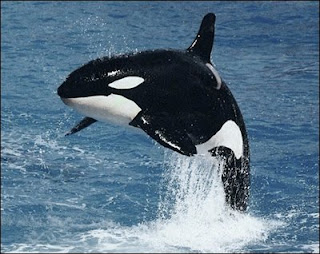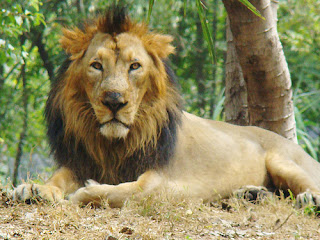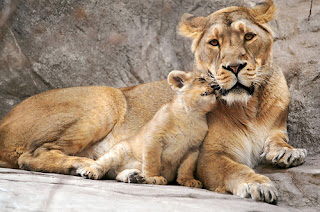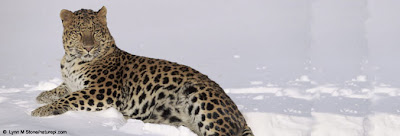A Blue whale is classified as an ocean mammal and not as a fish. The reason is that it is warm blooded, inhales air, has some amount of hair or fur and feeds their progeny with milk. As per a long-held belief, it is the largest animal to have existed on the earth's surface. (The discovery of Amphicoelias fragillimus dinosaur may update this belief.) The biological name of this ocean mammal is Balaenoptera musculus.
Physical Description
The Blue whale has a long, tapered and streamlined body. The head's length is 25 % of the body length. The upper part of the head is U shaped, flat and broad. The smooth body is almost free of parasites, though there are some barnacles on the tips of the flippers, dorsal fin and the edge of the fluke. From the submaxilla to the navel, there are 55-68 ventral grooves or pleats. The dorsal fin is curved and small. Its maximum length is 12 inches. The flippers are short and tapered. The flukes are shaped like a triangle and are broad.
Length and Weight
The length of a full grown is maximum 33 meters or 110 feet and the weight is 181 MT or 200 ton. Blue whales found in the Northern hemisphere are 75 to 80 feet long. Those in the Southern hemisphere can be 90 to 100 feet long. At any particular age, the female is larger than the male. The male usually weighs more 100 tons and the female approximately 150 tons.
Social Behavior
The Blue whale may be located alone or in small groups, but most frequently as a pair. Rarely, a large group of 50 to 60 such whales can be noticed. This mammal is a fast and strong swimmer. Generally, it moves at a speed of 12 mph. When it gets alarmed, it can accelerate up to 30 mph. The species can prosper all told oceans on the globe. During winter, they change their habitat from tropical waters to temperate ones. Here, they can reproduce and give birth to new Blue whale. Feeding is possible in temperate, tropical and polar waters.
Reproduction
When the male and female whale reaches the age bracket of six to ten years, they are generally are of 74 - 79 feet in length respectively. They then attain sexual maturity. The pregnancy period is of one year. Offspring can be born every 2 to 3 years. Just after birth, they weigh 3 tons and are 23-27 feet in length. They are breastfed for 7 to 8 months. In this span of time, the offspring drinks 379 liters of mother's milk per day. It's weight increases by 200 pounds and length 1.5 inches per day. When the length becomes 52 feet and weight about 23 tons, the nursing process is ceased.
Food
The primary food of the Blue whale is small and shrimp-like creatures. These are called Euphausiids or Krill. In summer, the whale satiates its hunger by eating just more 4 tons per day. The import is that 40 million krill are killed by one such whale per day. Initially, an enormous quantity of water and food is held in the mouth. Instead of teeth, Blue whale have baleen plates to process food, which is majorly krill, plankton, squid and small fish. While the mouth is being closed, water is thrown out of the baleen plates. There are approximately 320 pairs of black baleen plates that are 1 meter long, 53 centimeters wide and weighing 90 kg. The food gets locked near the tongue and is swallowed.
Special Facts
The size of the main arteries of a Blue whale can permit a small person to crawl through it. Although it feeds at a depth of less than 330 feet, it can dive up to 1640 feet. One dive lasts for 10 to 20 minutes. This whale can live a life of 110 years. While this mammal is as huge as a Boeing Jet, its heart is just like a small car in size. It's tongue can support fifty people. When this creature comes to the surface for air, the spout can reach up to 30 feet. The sound of a Blue whale may reach 188 decibels, making it louder than a jet, which is 140 decibels.
Blue whale are not harmed by any living species differently humans. 99 % of them were annihilated in course of the whaling efforts and the species became endangered in the 1950s. One must arrest the desire to hunt a Blue whale and enable this colossal mammal to prosper and regain its pristine glory.
Previous Post: Scarlet Macaw












